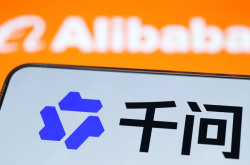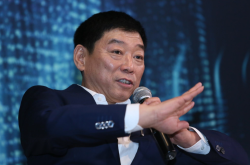Sony Mobile Fully Exits Chinese Market: Unable to Keep Up with Domestic Rivals, Falling Behind the Trend
![]() 11/17 2025
11/17 2025
![]() 464
464
Sony Finds Greater Comfort Without Manufacturing Phones.
Without a single formal goodbye, Sony Mobile quietly bids farewell to the Chinese market.
On November 6, 2025, the official WeChat public account of Sony Xperia was deregistered, with its homepage indicating that it was no longer operational. In August of the same year, the domain name of Sony Mobile's Chinese official website ceased functioning. Although the website still showcases display pages for several models, the links to product details are no longer active.
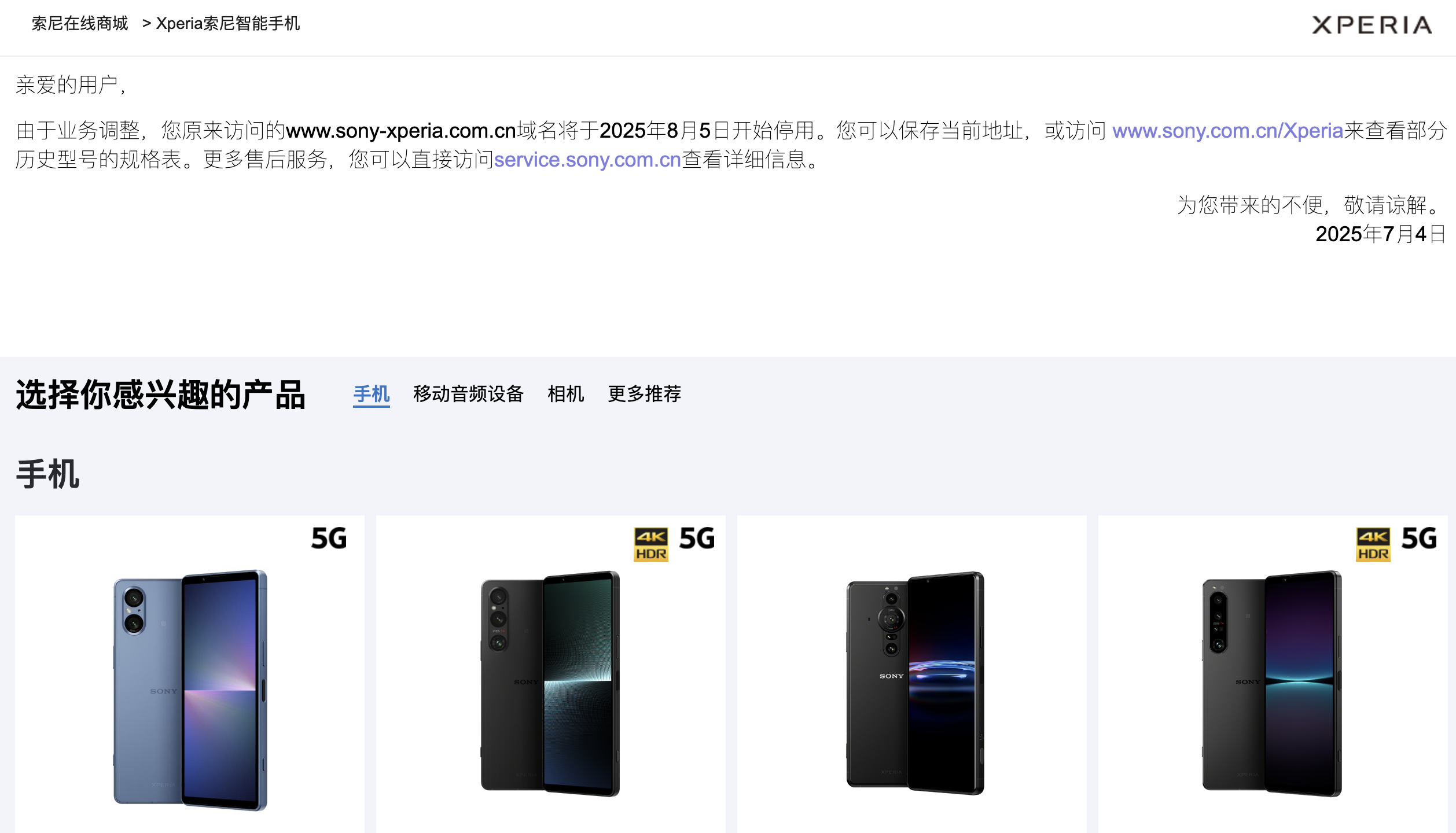
(Image Source: Sony China Official Website)
While the series of moves by Sony Xperia—deregistering brand accounts, removing products from the official website, and ceasing Weibo updates—over just a few months may appear abrupt, it is not a sudden occurrence but rather an inevitable outcome of Sony Mobile's long-standing 'mismatch' with the Chinese market.
A Decade-Long Farewell That Lingered On
If we were to identify the golden era for Sony Mobile in China, it would undoubtedly be the period when Sony Xperia was still known as Sony Ericsson.
Between 2005 and 2010, during the pre-smartphone era, Sony Ericsson emerged as arguably the most favored mobile brand among young Chinese consumers. In the realm of photography, the K750i introduced high-pixel photography to consumers; in terms of music, the W800 and W995 models came equipped with built-in Walkman sound effects. Additionally, Sony Ericsson innovated with the C905, an 8-megapixel imaging marvel.
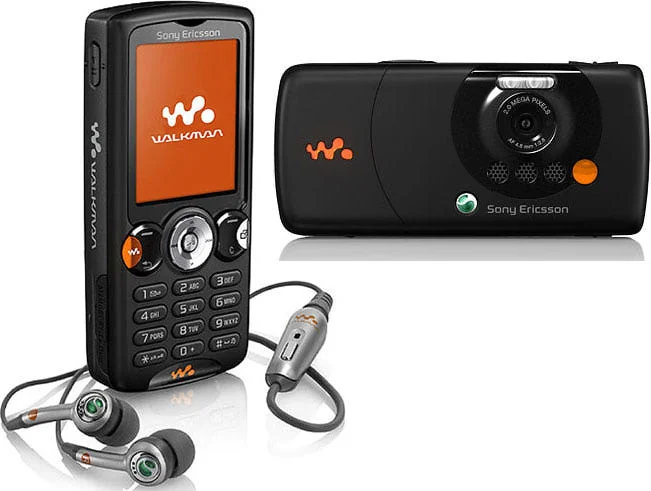
(Image Source: Sony)
As the smartphone era dawned, Sony Xperia made its debut. Initially, Sony Mobile fared decently in China, with data indicating that Sony ranked among the top five in shipments in the Chinese market in 2011. The Xperia Arc, launched in China, garnered significant attention with its unique transparent waistline design.
Subsequently, the Sony Xperia Z series emerged as the flagship line, with the Z1, Z2, and Z3 models, spanning four generations, once again attracting a loyal following with their outstanding industrial design, robust features, and Sony's exclusive imaging technology. However, by that time, highly competitive brands had already made their mark in the Chinese market. Flagship models like the Huawei Ascend P7 and vivo X Shot, which emphasized high-end design and imaging capabilities, had already entered the fray. Sony's high pricing without distinctive features signaled the initial signs of decline.

(Image Source: Sony)
The real turning point occurred between 2016 and 2018 when Chinese brands surged ahead: Huawei forged a partnership with Leica, OPPO and vivo's flagship series found their market niche, and the groundbreaking Xiaomi Mi 6 was released. During this period, although Sony launched flagship models like the XZ Premium with impressive specifications, their high prices and near-stock system experience made them ill-suited for the Chinese market.
During this era, Sony Xperia began to be relegated to a 'niche brand.'
Sony has consistently adhered to an 'engineer's perspective' for its flagship standards, such as the 4K screen and 21:9 aspect ratio of the Xperia 1 series, professional Cinema Pro and Photo Pro modes emphasizing technical parameters, retaining a dedicated shutter button, and insisting on a lightly customized near-stock system. These features are unique and professional, but mobile photography places a greater emphasis on algorithms—that is, easily capturing photos that align with popular aesthetics. Sony clearly does not grasp this principle, or rather, it adheres to its own stubbornness.
Weak localization capabilities are, in fact, the crux of Sony's downfall. Although the Xperia UI maintains the clean style of stock Android, it comes at the expense of incompatibility with China's mainstream ecosystem. NFC transit cards are unsupported, local cloud service experiences are subpar, permission systems do not meet the needs of domestic apps, WeChat video shooting optimizations are inadequate, and payment and lifestyle service functions are lacking. Although Sony attempted to forge a deep partnership with Meizu, which was responsible for enhancing and optimizing apps and connectivity within the system, it only managed to improve a small part of the overall experience.

(Image Source: Sony)
In other words, would you be willing to pay nearly 10,000 yuan for a phone that offers virtually no local services, lacks outstanding imaging capabilities, and does not excel in performance?
This is directly reflected in market performance: data from the China Academy of Information and Communications Technology (CAICT) reveals that Sony's market share in China over the past five years has been negligible; IDC's 2023 annual report also indicates that Sony's share in the Chinese smartphone market is less than 0.1%.
Had Sony chosen to abandon the struggle a decade ago, perhaps this farewell ceremony would have been more dignified.
The 'One Sony' Strategy Yields Results, but Mobile Business Lags Behind
Historically, the downfall of many brands can often be attributed to their failure to identify problems in a timely manner, but Sony's mobile business presents the opposite scenario. As early as 2012, Kazuo Hirai, then President of Sony Group, recognized that Sony Group possessed a vast array of businesses, including music, gaming, film, semiconductors, and hardware, yet lacked the ability to integrate resources effectively. He subsequently proposed the 'One Sony' strategy, aiming to leverage the strengths of each business to achieve greater success for the group.
Under this strategy, the mobile business should have been the primary beneficiary. In 2013, Sony launched the Xperia Z1, the first phone under the One Sony strategy. It integrated the G Lens from the imaging business, TRILUMINOS mobile display technology and the X-Reality mobile image processing engine from the TV business, and the powerful CIS Sony IMX220 from the semiconductor division. However, it ultimately failed to achieve success.
Not only was it not well-received in the Chinese market, but the Xperia, deployed under the One Sony strategy, also faced setbacks in the global market and even in its home country of Japan.

(Image Source: Sony-WordPress)
In the Japanese market, Sony Mobile once held a double-digit market share but has recently been eclipsed by the iPhone; in the European market, its share has long been below 2%; in North America, Sony Mobile has been marginalized. Rather than saying that Sony Mobile is 'choosing a niche market,' it would be more accurate to state that it is gradually being eliminated by the mainstream market and is merely maintaining its reputation with a limited number of professional users.
More critically, as smartphone competition enters the 'AI Phone' era, Sony's advantages have further diminished. Domestic flagships have already introduced large models at the system level, utilizing semantic understanding, intelligent scene recognition, and on-device AI computing to optimize photography, organize content, and enhance search experiences. In contrast, Sony has yet to outline a clear plan for these capabilities.
Perhaps many readers are also curious why Apple, which has also not deployed AI in mainland China, can continue to thrive?
Apple's success in China is not solely attributed to its 'brand halo' but also to the completeness of its ecosystem. The iOS experience is stable, consistent, and offers excellent performance. From app quality to privacy mechanisms, it has strong barriers. More importantly, Apple has made significant localization efforts in China, developing a separate version of Maps for the Chinese market, collaborating with local operators for cloud services, deeply integrating payment systems, covering first- and second-tier cities with after-sales networks, and providing extremely high service standards in its directly operated stores. These are all aspects that Sony Mobile lacks in the Chinese market.
Ultimately, the core issue for Sony Mobile in China remains software/system-related. As mentioned earlier, the One Sony strategy did provide the mobile business with abundant resources, but these resources did not include much software support. Even with the recently released Xperia I VII, the software support from various departments only provided professional video recording and photography software, without involving optimizations for the system experience.
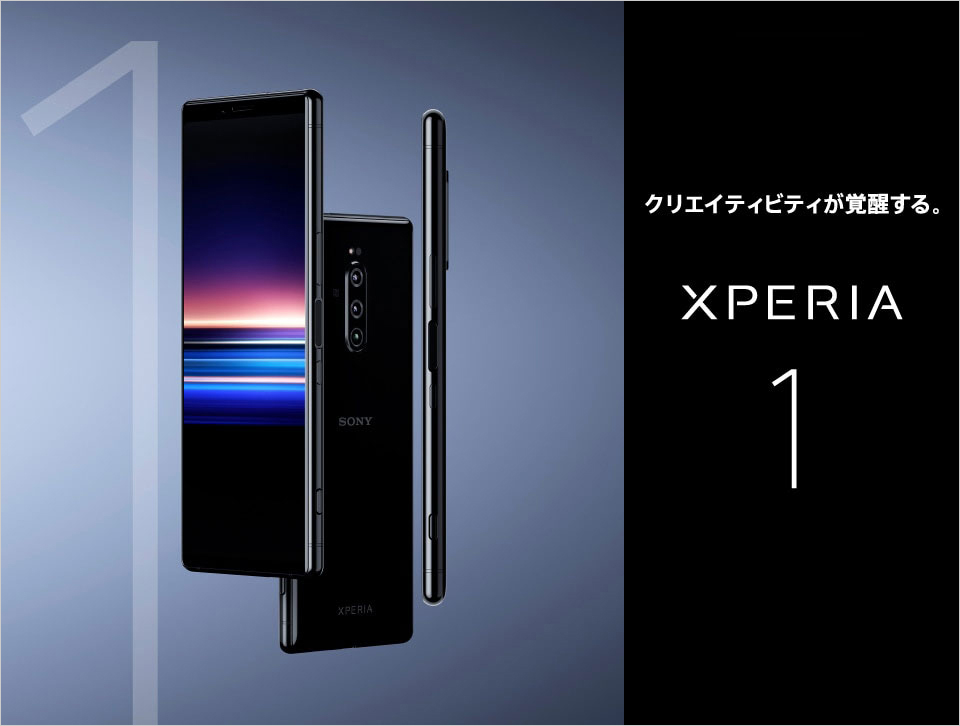
(Image Source: Sony)
This also explains why Chinese mobile brand launches in recent years always allocate ample space for system experience. Under hardware homogenization, whoever offers smoother performance, more convenient services, and better system-level AI will capture a larger market share. Sony Mobile has virtually no system experience to speak of in China, which is one of the reasons for its business failure.
When Will Sony Mobile Completely Disappear?
With Sony Mobile exiting China, will it completely withdraw from the global mobile market, just like LG?
According to Counterpoint statistics, Xperia's global market share has hovered around 0.2%–0.3% over the past five years and has failed to rank in the top ten in most countries.
This indicates that for Sony, mobile phones are no longer a business that needs to be profitable but rather serve as a technology window. This brings us to Sony's mobile image sensors, which are dominating the mobile field. Sony holds over 50% of the global image sensor market share, and its CMOS development for mobile phones is extremely rapid, requiring a product platform that can deploy new technologies at any time. The Xperia happens to fulfill this role. Technologies like 1-inch large sensors, zoomable periscopes, and real-time eye autofocus often debut on Xperia models.

(Image Source: Sony)
However, in the past two years, Sony's mobile imaging business seems to have forged closer partnerships with Chinese brands like vivo, OPPO, and Xiaomi, with sensors such as the LYT900, LYT818, and LYT828 being first launched by these Chinese brands. This inevitably raises concerns about the future of Sony Xperia. Once Sony's imaging division no longer requires mobile phones as a verification platform, Xperia could become the next LG.
As for whether Sony will consider abandoning its global mobile business, that may require time to tell.
Sony, Japan, Nostalgia, Sony Ericsson
Source: Leikeji
Images in this article are from the 123RF Authentic Library. Source: Leikeji





